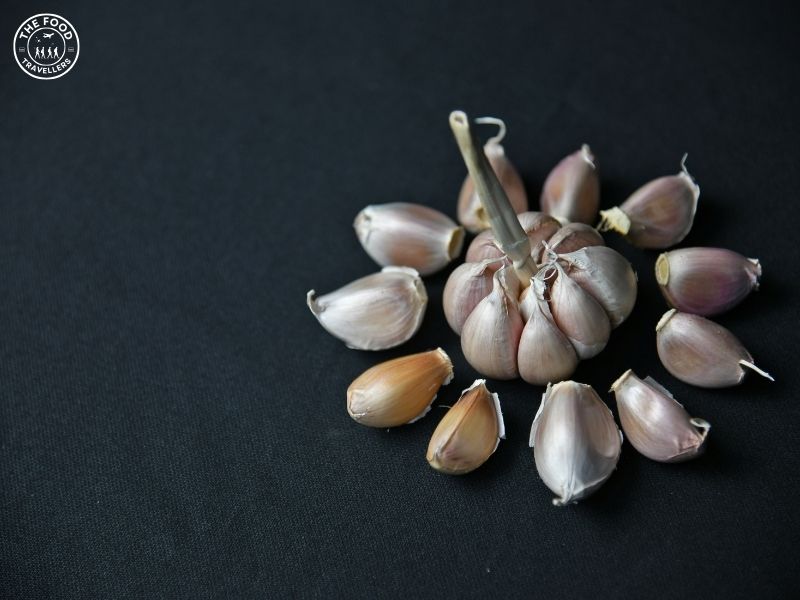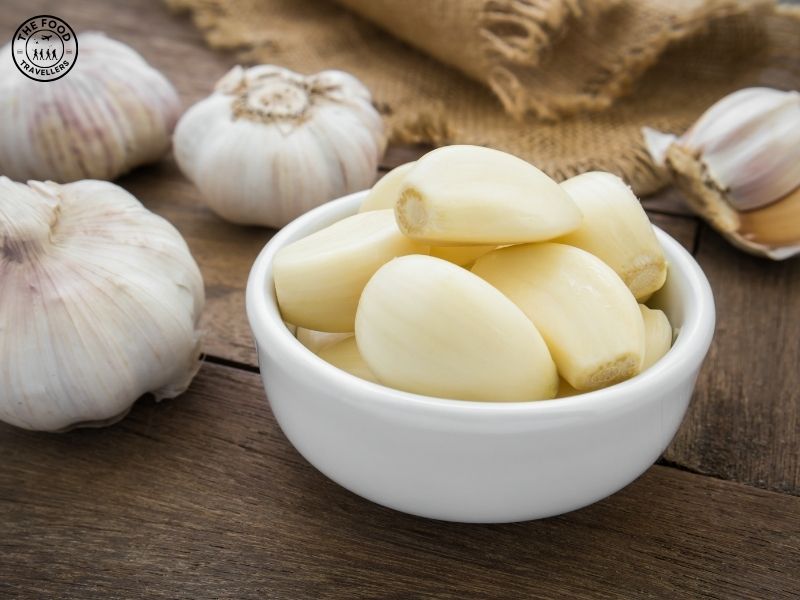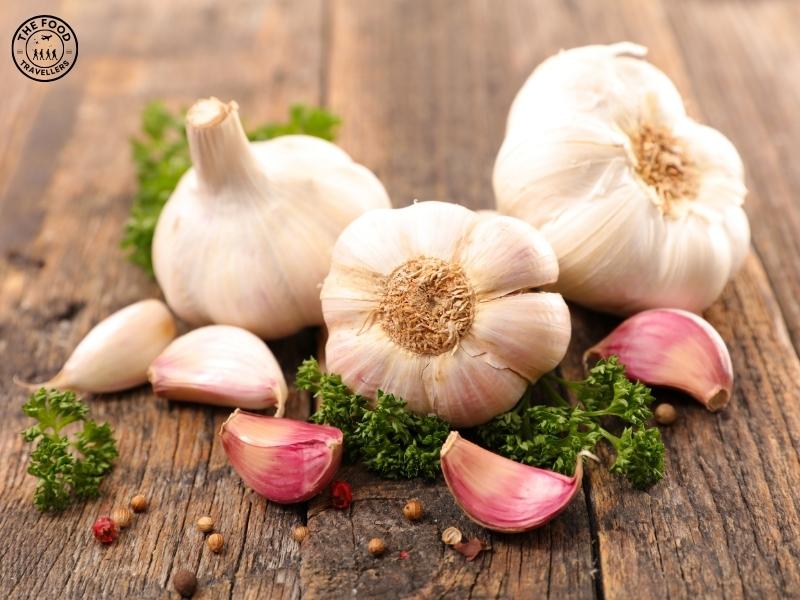Health Benefits, Advantages, and History
Garlic, scientifically known as Allium sativum, is a powerhouse in both the culinary world and the field of natural health remedies. Known for its pungent aroma and distinctive flavor, people have used garlic for centuries to enhance the taste of food and for its medicinal properties. In this blog, we’ll explore the health benefits, advantages, and the rich history of this ingredient, revealing why it is such a cherished ingredient worldwide.
Health Benefits of Garlic
Garlic is much more than just a flavoring agent. It has been acclaimed over the ages for its multiple health benefits. It contains vitamins, minerals, and sulfur compounds, and with all this, it brings many benefits to the body:
Garlic Enhances Immunity
Garlic has strong antibacterial, antiviral, and antifungal properties, making it a natural immune booster. It helps the body fight infections and boosts the production of white blood cells. Regular consumption of this ingredient can reduce the severity and duration of common colds, flu, and other infections.

Improves Heart Health
Garlic has been widely researched for its heart-protective properties. Studies have shown that this ingredient reduces blood pressure, reduces cholesterol levels, and prevents the formation of arterial plaques. The sulfur compounds in garlic, particularly allicin, are vasodilators, thus improving blood circulation and preventing cardiovascular diseases.
Anti-inflammatory Properties
Chronic inflammation has been linked to various diseases, such as arthritis, heart disease, and even cancer. Diallyl disulfide, among others, present in this ingredient helps suppress the level of inflammation in the body. Regular consumption of garlic tends to ease symptoms of inflammatory conditions and improves joint health.
Antioxidant Power
Garlic is a rich source of antioxidants, especially vitamin C and selenium, which help protect cells from free radicals damage. Free radicals cause premature aging and a host of chronic diseases, including cancer. Antioxidants in this ingredient reduce such damage and maintain overall health.
Detoxifies the Body
Garlic has detoxifying properties in nature, specifically against heavy metals. Researchers found out that garlic can expel the presence of lead and other chemicals in the human body. The sulfur compounds from this spice attach to toxins to assist them in leaving through the kidneys and liver.
Aids Digestive Health
Garlic has the tendency to boost digestive enzyme secretion, assisting in digestive process. Therefore, it helps prevent gases, bloating, and indigestion. Also, by the antimicrobial action, it balances gut bacteria, supporting the combat of dangerous bacteria that could trigger ulcers on stomach, for example H. pylori.
Supports Bone Health
There is evidence that this ingredient helps increase bone mineral density while improving bone strength. Such is very crucial to most people suffering from osteoporosis. With such an amalgam, the strong manganese content present in garlic coupled with the ability to increase estrogen levels in women, bones end up being strengthened after some period of use.
The Benefits of Using Garlic
Garlic is not just a healthy food but offers numerous benefits that make it a staple in the kitchen and home remedies:
Flavor Enhancer
Garlic adds a deep, savory, and sometimes spicy flavor to food. It’s versatile enough to be added to nearly all cuisines, from Italian pastas to Indian curries and even in sauces, soups, and marinades. Raw, sautéed, roasted, or pickled, it adds layers of flavor to any meal.

Easy to Use and Store
Garlic is easy to add to cooking preparations- minced, crushed or in whole forms. Available fresh bulbs, dried garlic powder, and garlic paste have made this ingredient useful when used. This ingredient also stores well, in an air-conditioned place it could last weeks and, given proper storage, can survive months.
Affordability and accessibility of Garlic
One of the most significant benefits with garlic is that it is readily and not very expensive. It can be found in nearly every supermarket in the country, and it’s always on the low side concerning monetary value.
Natural Antibiotic
Garlic is a natural antibiotic that kills bacteria and viruses without damaging the benevolent flora in the body. It is absolutely safe and an effective antibiotic for minor infections, for example, for colds, and can prove to be a prevention device.
Anti-Cancer Potential of Garlic
Though research is still in the process, yet there are some research papers which show that this ingredient actually contributes to cancer prevention as the sulfur compounds within them can slow down the spreading of cancerous cells or tumors especially in the case of the digestive system.
Versatile remedies
People have used garlic as a herbal remedy for many health issues. For example, it treats high blood pressure, helps reduce cholesterol, and cures athlete’s foot and fungal infections. It can also be applied to the skin to relieve insect bites.
Origin and History of Garlic
Garlic has history going back thousands of years, and is believed to have originated in Central Asia, particularly areas of modern-day Iran and Turkmenistan. Civilizations have cultivated and used it both for its culinary and medicinal properties.
Ancient Egypt
Use of garlic was highly prevalent in ancient Egyptian culture. The people had great respect for this ingredient because of its medicinal values and, sometimes workers who constructed the pyramids were supplied with this to make them strong. Egyptians believed that the evil spirits would leave by using this ingredient, so even for their offerings to the gods, they used this ingredient.
Ancient Greece and Rome
In Greece and Rome, the people used this ingredient for medicinal purposes and in healing sickness. One of the oldest Greek doctors, Hippocrates, used it to heal respiration problems, stomach problems, and wounds. The fact is that Roman soldiers took garlic because it made them strong before battles.
Chinese Traditional Medicine
Traditionally, in Chinese medicine, garlic has been used to treat numerous conditions, including respiratory and digestive disorders, for over 3,000 years. The healers believed that it balanced the “Qi” in the body and used it for fevers, infections, and poor circulation.
Garlic in Medieval Europe
During the Middle Ages, people used this ingredient as a powerful medicine. They believed it offered protection, so they hung it in their homes to prevent illness and ward off evil spirits. In Europe, they also used garlic to protect against the Black Death, as it was thought to purify the air around plague victims.
Garlic Today
This ingredient has become a staple in kitchens worldwide in the modern era. It is still being appreciated for its culinary and medicinal values. The resurgence of herbal medicine and natural healing has revived interest in garlic’s health benefits, making it a popular supplement in today’s wellness market.
Conclusion
Garlic is much more than just a flavorful addition to our meals. Its rich history, impressive health benefits, and versatile use make it a vital ingredient in kitchens. Whether ancient civilization or modern time, this ingredient has proven itself to be an essential ally in fostering health, immune system development, and great flavor addition to dishes. This ingredient remains a timeless and invaluable ingredient in any home in cooking or improving well-being.
Share your thoughts on our Instagram channel @thefood.travellers


